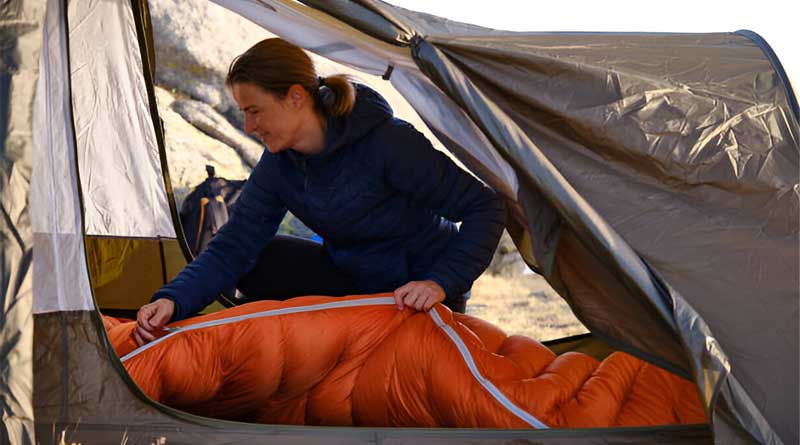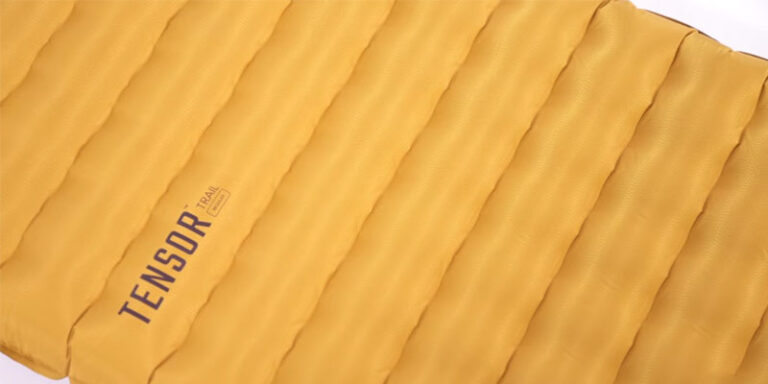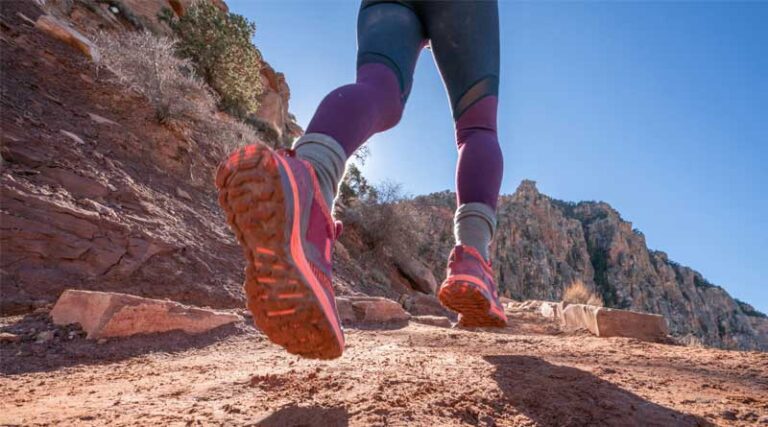Wild camping in the UK needs the right gear, and a warm sleeping bag is essential. The weather can change quickly. Cold nights and damp mornings are common. A good sleeping bag keeps you warm and dry. It also helps you sleep better outdoors. Choosing the best one can be tricky. There are so many options out there. Some are better for summer, others for winter. Some are light to carry, others more comfortable. In this guide, we’ve picked the top wild camping sleeping bags in the UK. We’ve looked at warmth, weight, and price. Whether you’re a beginner or experienced camper, you’ll find something that suits your needs and budget.
1. MalloMe Sleeping Bag

- Temperature rating: 10°C to 25°C comfort range
- Weight: Approximately 3 lbs (1.36 kg)
- Material: Waterproof Hex-Tech shell with 3D synthetic fiber fill
- Size: Fits adults up to 6 feet tall
The MalloMe Sleeping Bag is a solid choice for wild camping in the UK. It works well in spring, summer, and autumn. The temperature rating is 10°C to 25°C, which covers most UK conditions. It’s light enough for backpacking and comes with a handy compression sack. The Hex-Tech waterproof shell and double-layered stitching help keep moisture out. The synthetic fill inside keeps you warm and cozy at night. The zippers are smooth and don’t snag, which makes setup easy. It also has a small built-in pillow and a secure velcro strap near the head. These little details add extra comfort when sleeping outdoors.
This bag is a great fit for casual campers or guests staying overnight. It’s roomy enough for someone around 6 feet tall. The inside feels soft, and it stays warm through mild UK nights. I used it during March and stayed warm and comfortable. It’s not made for harsh winter nights, but it’s perfect for most of the year. Cleaning is simple—wipe it down or throw it in the wash. It rolls up small, making it easy to carry or store. Kids will also love the bright colours. For the price, the quality is excellent. If you need a budget-friendly, all-round sleeping bag, this is a smart pick.
Pros:
- Lightweight and easy to carry
- Waterproof and machine washable
- Comfortable and spacious design
- Good value for money
Cons:
- Not ideal for very cold winter conditions
- Built-in pillow may be too small for some users
2. Sportneer Sleeping Bag

- Temperature rating: 5°C to 25°C (comfort 10°C to 20°C)
- Weight: 1.5 kg (3.3 lbs)
- Size: 220 × 80 cm when zipped; 220 × 160 cm when opened
- Material: Polyester taffeta shell, pongee lining, 3D polyester fill
The Sportneer Sleeping Bag is a great option for warm-weather camping. It’s made for comfort during spring and summer trips. With a temperature rating from 5°C to 25°C, it works well for mild nights. The material feels soft and breathable. The inside keeps warm, while the outer shell is water-repellent. A half-circle hood with drawstring helps trap heat. There’s also a bottom zipper to cool your feet. It’s simple but thoughtful, making it nice for all ages. Whether you’re camping, hiking, or at a school trip, this bag fits the job.
It’s also lightweight and easy to carry. At only 1.5 kg, it won’t weigh you down. It packs into a small compression sack with a handle. That makes it ideal for travel, kids’ camps, or indoor use. When unzipped, it becomes large enough to use as a blanket. The zipper doesn’t snag and works smoothly. My son used it for a school trip and loved it. He even tested it at home and stayed warm and cozy. This bag suits adults too, with enough space to stretch out. For the price, the quality and comfort are impressive. A smart buy for families and casual campers.
Pros:
- Lightweight and compact for travel
- Comfortable and roomy inside
- Can be used as a quilt
- Good for kids and adults
Cons:
- Not suitable for very cold weather
- No built-in pillow or hood padding
3. Vivo Technologies 3-Season Bag

- Temperature rating: 10°C to 20°C, suitable for spring, summer, and autumn
- Weight: 1.35 kg (2.97 lbs)
- Material: Waterproof Hex-Tech shell with double-layered S-shape stitching
- Extras: Snag-free double-sided zippers, adjustable drawstrings, and velcro securing strap
The Vivo Technologies 3-Season Bag is perfect for mild UK camping trips. It’s made for spring, summer, and autumn use. The bag keeps you warm between 10°C and 20°C. It feels soft and has a snug fit thanks to adjustable drawstrings. The zippers are smooth and easy to use. The velcro strap stops the zip from moving during sleep. It’s also strong and durable with double-layered stitching. Kids and adults alike will find it comfortable. My daughters used it on a school camping trip and slept very well. They had no complaints and loved the bright colours too.
This sleeping bag is light and easy to carry. It weighs just 1.35 kg, so it’s ideal for travel. The compression sack with straps makes it easy to store. It doesn’t take up much room in a backpack. The outside is waterproof and can be wiped clean. For deeper cleaning, you can just throw it in the wash. It’s built to last and easy to care for. It’s also roomy enough to move around comfortably. Overall, it’s a great sleeping bag for the price. If you want something warm, light, and simple, this is a good pick.
Pros:
- Lightweight and compact design
- Soft, warm, and comfortable inside
- Easy to clean and machine washable
- Great value for money
Cons:
- Not suitable for winter camping
- No built-in pillow included
4. Trail Envelope

- Temperature rating: Comfort at 5°C, extreme rating -5°C, max 15°C
- Weight: 1.3 kg (stored)
- Size: 190 × 75 cm (220 cm with hood)
- Material: Water-resistant polyester shell with 250g/m² hollow-fibre filling
The Trail Envelope is a great sleeping bag for UK adventures. It works well in late summer, autumn, and early winter. The comfort rating is 5°C, so it’s warm on chilly nights. The built-in hood has a drawstring that keeps heat in. This keeps your head and neck warm while you sleep. The filling is soft and cosy, making nights more comfortable. My twins used these for Duke of Edinburgh trips. They stayed warm and slept well. These bags also held up after several weekends of cadet camping.
The sleeping bag is also easy to pack and carry. It weighs just 1.3 kg, which suits long hikes. The included drawstring bag keeps it compact. You can clip or strap it to your backpack. The outer shell keeps dampness out from wet ground. It’s also machine washable, which is handy after muddy trips. You can even hang it up to air dry. My sons found it easy to roll up and store. I’ll soon buy another for my older son’s expedition. For the price, the quality is excellent. It’s a smart choice for school trips or weekend camps.
Pros:
- Lightweight and compact with carry bag
- Warm hood keeps heat in
- Machine washable and quick to dry
- Good value for multi-use trips
Cons:
- Not warm enough for deep winter
- No inner pocket or pillow included
5. Silentnight Sleeping Bag

- Temperature rating: 0°C to 12°C (ideal for spring and summer)
- Weight: 1.3 kg
- Material: Softfill™ fibres and 100% recycled fabric
- Features: Can be used zipped as a bag or open as a cover
The Silentnight Sleeping Bag is soft, light, and very comfortable. It’s made with fluffy Softfill™ fibres that feel snug and cosy. It works well for spring and summer camping trips. The temperature range is from 0°C to 12°C, so it keeps you warm on cool nights. It weighs just 1.3 kg, which makes it easy to carry. This is perfect for backpackers or campers who want to pack light. It also rolls up small and stores neatly in your kit.
This bag can be used in two ways. Zip it up like a regular sleeping bag, or open it flat like a quilt. That’s great for indoor use too. The material feels soft against your skin and holds warmth well. It’s also made from recycled fabric, which is good for the environment. You can wash it in a machine to keep it fresh after trips. The build quality is solid and long-lasting. It’s ideal for short breaks, festivals, or weekend hikes. Silentnight is a trusted brand and this bag lives up to the name.
Pros:
- Soft and fluffy for extra comfort
- Lightweight and easy to carry
- Machine washable and quick to dry
- Eco-friendly recycled materials
Cons:
- Not suitable for cold winter trips
- No hood or inner pocket included
6. Milestone Camping Envelope

- Temperature rating: 2-season (late spring to early autumn)
- Filling & Material: 150gsm hollow fibre filling, 170T polyester shell
- Dimensions: 170cm x 75cm; packed size: 33cm x 15cm
- Features: Full-length zip; opens fully into a blanket
The Milestone Camping Envelope is a basic but useful sleeping bag. It’s great for summer nights or indoor use. The bag is light and packs down small, which is handy for backpacking or festivals. It’s not very thick, but it gives more warmth than you’d expect. For warm weather or sleepovers, it works just fine. It unzips fully, so it can also be used as a blanket. That’s a nice touch for flexibility at home or on holiday.
It’s smaller than most bags, so better for kids or small adults. It’s not suited for cold nights outdoors. If you need warmth, you’d have to wear thick clothes inside it. However, it’s surprisingly durable. The zip holds up well even after lots of use. It washes easily and dries fast too. It’s been used in wild ways by kids and still looks fine. For the price, it’s a solid choice for occasional use. Just don’t expect winter warmth from it.
Pros:
- Lightweight and compact
- Can unzip into a blanket
- Very durable zip and fabric
- Machine washable and dries fast
Cons:
- Not warm enough for cold nights
- Too small for larger adults
7. Youyijia Lightweight Bag

- Temperature rating: 5℃–20℃; suitable for 3 seasons
- Materials: 210T waterproof nylon shell, 170T polyester lining, 200g hollow cotton fill
- Size & Weight: 205cm x 74cm; compresses to 36x18x18cm
- Features: Bottom zipper, convertible to double bag, machine washable
The Youyijia Lightweight Bag is a handy sleeping bag for mild weather. It’s big enough to stretch out in comfortably. The bottom zipper adds ventilation for your feet. It’s lightweight and fits neatly into the carry bag. Great for festivals, backpacking, or a quick campout. It also comes in lots of fun colours. The hood has drawstrings, which helps keep your head warm.
It’s not very warm for cold nights. You’ll need to wear clothes if it’s chilly. It’s more suited to spring or summer use. It stayed dry even when it was damp outside. The outer shell feels tough and is waterproof. It can be zipped with another bag to make a double, which is perfect for couples. It also opens up into a blanket. That’s great for home or car camping. For the price, it’s a good buy.
Pros:
- Lightweight and easy to carry
- Waterproof and dries fast
- Roomy size and can unzip flat
- Can zip two bags into one
Cons:
- Not very warm in colder nights
- Needs extra layers for comfort
How to Choose Wild Camping Sleeping Bags?
When you’re planning a camping trip, a good sleeping bag can make or break your experience. You’re sleeping far from home, possibly in unpredictable weather, and often without the luxuries of car camping. That means your sleeping bag isn’t just gear—it’s your bed, your heater, and your barrier against the elements. Choosing the right one is essential for comfort, warmth, and safety.
This guide breaks down everything you need to know when selecting a sleeping bag—from temperature ratings and insulation types to weight and packability.
1. Understand the Temperature Rating
What is a Temperature Rating?
Every sleeping bag is rated for a specific temperature range. These ratings tell you the lowest temperature the bag can handle while still keeping you warm. The key ratings are:
- Comfort: The lowest temperature at which an average sleeper will feel comfortable.
- Limit: The lowest temperature at which a male sleeper will stay warm.
- Extreme: The lowest survival temperature for a female sleeper—not recommended for regular use.
Choosing the Right Temperature Rating
If you’re wild camping in the UK, temperatures vary widely. For summer trips, a comfort rating of 5°C to 10°C may be fine. For spring and autumn, consider bags with comfort ratings of 0°C to 5°C. For winter camping, go for something below -5°C.
Always choose a bag with a slightly lower rating than you think you’ll need. It’s easier to unzip a bag if you’re hot than to warm up if you’re freezing.
2. Know Your Insulation Options
Down vs. Synthetic
Sleeping bags are typically insulated with either down or synthetic fibres, and both have their pros and cons.
Down Insulation:
- Made from duck or goose feathers.
- Excellent warmth-to-weight ratio.
- Compresses very small.
- Long-lasting if cared for properly.
- Con: Loses insulation when wet (unless treated with hydrophobic down).
- Con: More expensive.
Synthetic Insulation:
- Made from polyester fibres.
- Stays warm when damp.
- Dries quickly.
- Con: Heavier and bulkier.
- Con: Doesn’t last as long as down.
For wild camping where weight and weather resistance matter, synthetic bags are reliable and affordable. Down is great for serious backpackers needing top warmth-to-weight performance—just ensure it’s kept dry.
3. Choose the Right Shape
Sleeping bags come in a few shapes, and each one affects comfort, warmth, and pack size.
Mummy Bag:
- Tapered design fits snugly around your body.
- Warmer because there’s less air to heat up.
- Lighter and smaller when packed.
- Best for cold conditions.
Rectangular (Envelope) Bag:
- Offers more room to move.
- Often can unzip into a blanket.
- Best for warm weather or casual campers.
Semi-Rectangular:
- A compromise between room and warmth.
- Good for those who want comfort without too much bulk.
If you’re wild camping in cooler conditions, the mummy shape is usually the best choice. In summer, an envelope bag may be more comfortable, especially if you’re a restless sleeper.
4. Consider Weight and Packability
One of the golden rules of wild camping is to pack light. Your sleeping bag will likely be one of the bulkiest and heaviest items in your pack.
How to Keep Weight Down:
- Choose down insulation for a lighter pack.
- Go for a temperature rating suited to the season—no need for a -10°C bag in July.
- Look for bags with compression sacks to reduce volume.
For most wild campers, a sleeping bag weighing under 1.5kg is a good target. Ultralight options are available under 1kg, but these tend to be expensive and might sacrifice some comfort.
5. Look for Extra Features
These features can make a big difference in performance and ease of use:
- Hood with drawstring: Keeps your head warm and prevents heat loss.
- Draft collar and zipper baffles: Stop cold air sneaking in through zips or neck openings.
- Two-way zippers: Help with ventilation, especially at the feet.
- Left/right zip compatibility: Allows two bags to be zipped together.
- Water-resistant shell: Protects against morning dew or tent condensation.
Small touches like these are worth paying attention to when choosing a bag, especially for longer or more remote trips.
6. Durability and Maintenance
Wild camping often means rougher terrain and unpredictable conditions. Your sleeping bag needs to withstand more than just bedtime.
What to Look For:
- Strong outer fabric: Ripstop nylon or polyester is a good choice.
- Quality zippers: Avoid cheap ones that snag or break.
- Machine washability: Especially important for synthetic bags.
- Stuff sack quality: Reinforced stitching helps prevent tears.
Down bags need special cleaning and storage to stay in good shape. Synthetic bags are lower maintenance, making them a better option for beginners.
7. Budget Considerations
Prices for sleeping bags vary from £20 to over £400. Here’s what to expect:
- Budget (£20–£60): Usually synthetic, heavier, and bulkier. Fine for short trips in good weather.
- Mid-range (£60–£150): Better insulation, lighter materials, more reliable zippers. Suitable for regular wild campers.
- Premium (£150–£400+): Often down-filled, ultralight, and packed with features. Ideal for experienced hikers or colder conditions.
Don’t overspend if you’re just starting out. But don’t go too cheap either—a freezing night in a poor-quality bag can put you off wild camping for good.
8. Try Before You Rely
If possible, try the sleeping bag at home before heading out. Use it during a sleepover or backyard camp. Check how easy it is to pack, how warm it feels, and if it fits your body size.
A bag that’s too tight can feel claustrophobic. One that’s too big may not keep you warm enough. Get the fit right before you’re miles from home.
Conclusion
The best sleeping bag is the one that matches your needs, the conditions you’ll camp in, and your budget. Think carefully about when and where you’ll use it. Look for a temperature rating that suits the season, insulation that works for your packing style, and features that add value without bulk.
Remember: warmth, weight, size, and durability all matter. Do your homework, read user reviews, and don’t be swayed by price alone. With the right sleeping bag, your wild camping adventures will be safer, warmer, and much more enjoyable.



